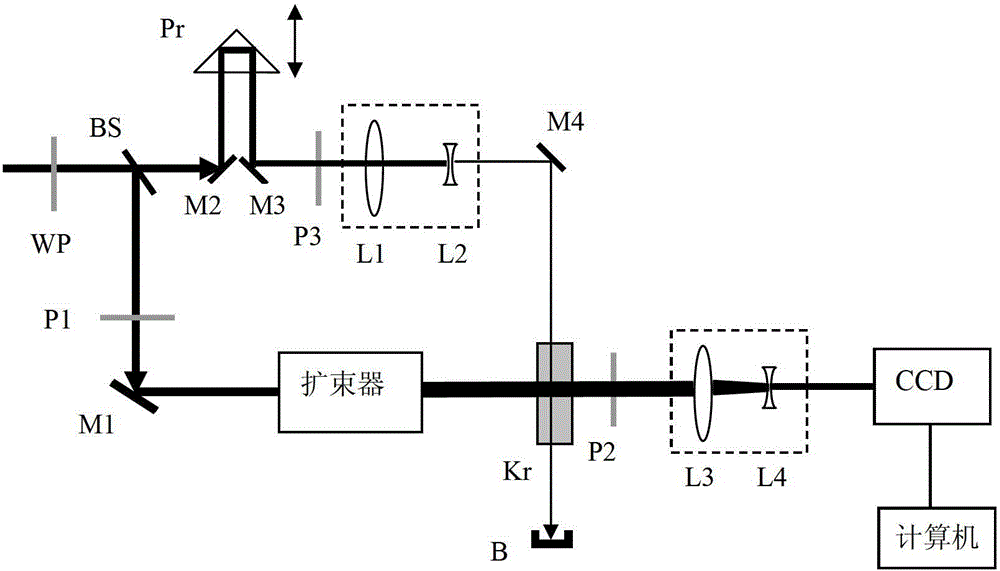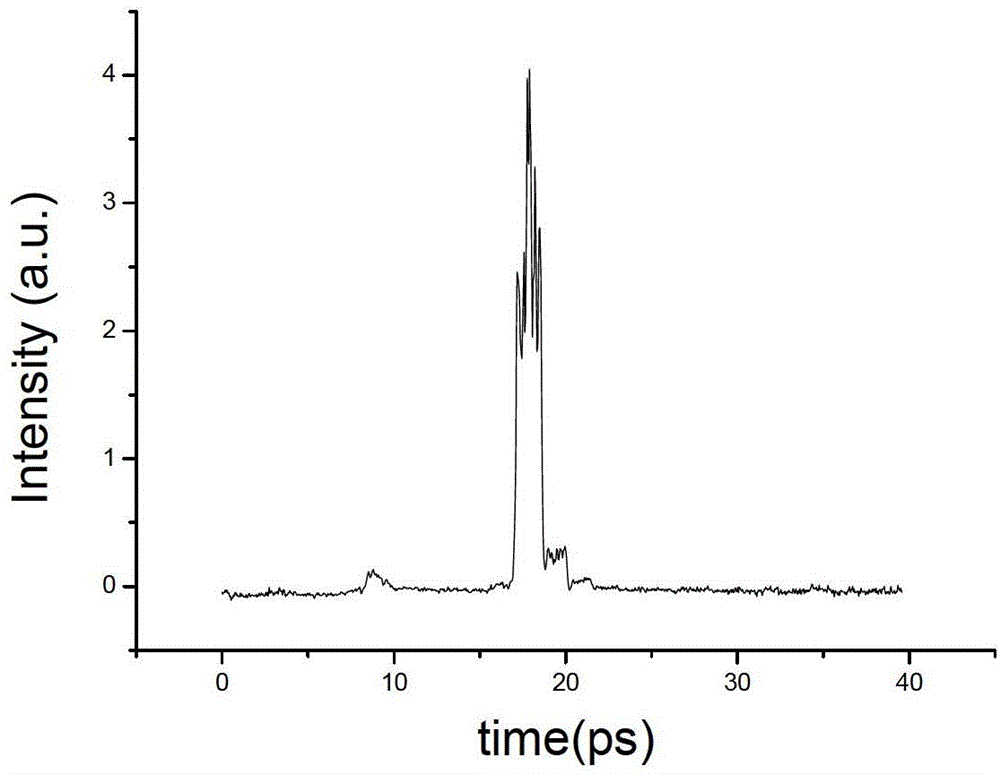Single-shot laser signal-to-noise ratio detection device
A detection device and a technology of signal-to-noise ratio, applied to lasers, laser components, phonon exciters, etc., can solve the problems of complex optical path debugging and low time resolution, and achieve simple optical path debugging, high time resolution, and improved The effect of resolution
- Summary
- Abstract
- Description
- Claims
- Application Information
AI Technical Summary
Problems solved by technology
Method used
Image
Examples
Embodiment Construction
[0030] A single-shot laser signal-to-noise ratio detection device, including a 1 / 4 wave plate, a beam splitter, a beam expander, an optical Kerr medium, an optical direction adjustment device, a delay device, a first polarizer, a second polarizer, and a second polarizer Three polarizers, a detector, and a first beam reducer.
[0031] The 1 / 4 wave plate and the beam splitter are sequentially set on the output light path of the light source, the beam splitter divides the light source into shutter light and signal light, the beam expander is set on the light path of the signal light, and the optical Kerr medium is set on the shutter light Where the signal light intersects, the third polarizer is arranged on the optical path of the shutter light, the first polarizer is arranged on the optical path of the signal light, and the second polarizer is arranged on the optical path of the signal light passing through the optical Kerr medium, The third polarizer is placed for vertical pola...
PUM
 Login to View More
Login to View More Abstract
Description
Claims
Application Information
 Login to View More
Login to View More - R&D
- Intellectual Property
- Life Sciences
- Materials
- Tech Scout
- Unparalleled Data Quality
- Higher Quality Content
- 60% Fewer Hallucinations
Browse by: Latest US Patents, China's latest patents, Technical Efficacy Thesaurus, Application Domain, Technology Topic, Popular Technical Reports.
© 2025 PatSnap. All rights reserved.Legal|Privacy policy|Modern Slavery Act Transparency Statement|Sitemap|About US| Contact US: help@patsnap.com



